
The third unsuccessful uprising of slaves in the Roman Republic, from Spring 73 BC to April 71 B.C., the War of the Gladiators and the other trained slaves led by the Thracian warrior Spartacus is known to history as the Third Servile War. Unlike the prior two slave uprisings, which had occurred in Sicily, among agricultural laborers, the Third Servile War broke out with the uprising of Spartacus and his fellow gladiators on the Italian mainland, within a week’s march of Rome, and threatened the social order not just of a single, isolated province, but of the entire state.
The Third Servile War was the greatest attempt of internal resistance to Rome’s gradual transformation from a democratic republic of small farmers and tradesmen into an imperial project of military expansion and economic exploitation. The Third Servile War caused many disputes inside the Roman senate years after the rebellion ended, and is partly opened the way for the transformation of the Republic into the Roman Empire ruled by those commanding the legions which maintained order. Unknown to most, many who later took public office in the Roman senate were involved in the rebellion, many as legionaries and centurions.
The rebellion was finally crushed through the concentrated military effort of a single commander, Marcus Licinius Crassus, although the rebellion continued to have indirect effects on Roman politics for years to come.
Spartacus, Crixus, Oenomaus, Gannicus and Castus were all leaders behind the third Slave rebellion against Rome. The official fate of Spartacus after their defeat from Crassus remains unknown, but he is believed to have perished in the Battle at the Silarus River.

“Two hundred gladiators tried to escape, but the guards recaptured most of them. Only seventy-eight men managed to fight their way out of the school, using weapons they had found in the kitchen, such as chopping-knives and spits. Fleeing through the streets of the city, the fugitives had the good luck to find several carts full of gladiators’ weapons, which were being shipped to another city. After arming themselves with these weapons, the gladiators had no trouble fighting their way out of Capua. They paused at a defensible place in the countryside, where they elected a chief and two captains. As their chief they chose Spartacus. Although he was a barbarian from one of the nomad tribes, Spartacus was brave, intelligent, and polite-more like a civilized Greek than a wild man from the Balkans…He was accompanied by his wife, who had escaped with him… When some soldiers came out of Capua to recapture them, Spartacus led the fugitives into battle. The soldiers were routed, and the gladiators captured from them a quantity of regular military equipment. As soon as the fugitives got their hands on conventional weapons and armor, they threw away their inferior gladiator equipment”.
This battle is from C3i #21 , which you can still find some places.
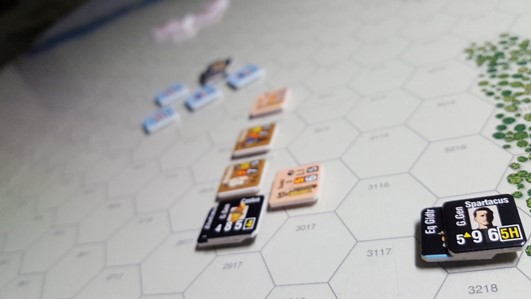
Spartacus’s view of the situation

Rome closes in.

Considius turns the charging Slaves!
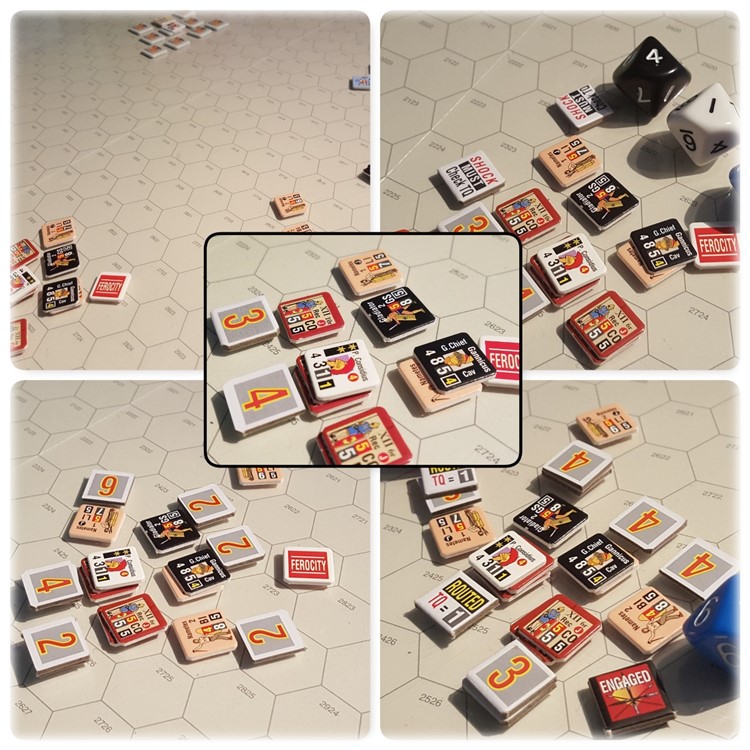
The ensuing battle sees losses on both sides. The much higher TQ ratings of the Slaves [8’s] versus the recruit level legions[6] is a key factor here. As the damage mounts any morale or TQ checks are 20% easier for the rebelling slaves!
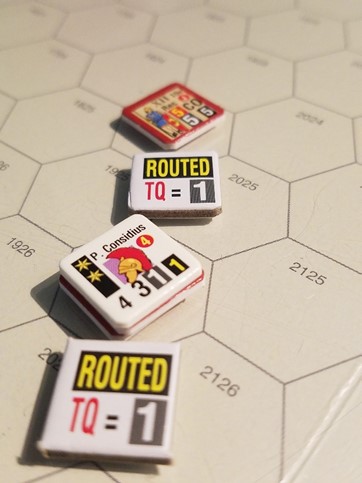
Considius flees the field.

On Rome’s left flank the Boi have closed in and are giving the Romans an even bigger pasting.
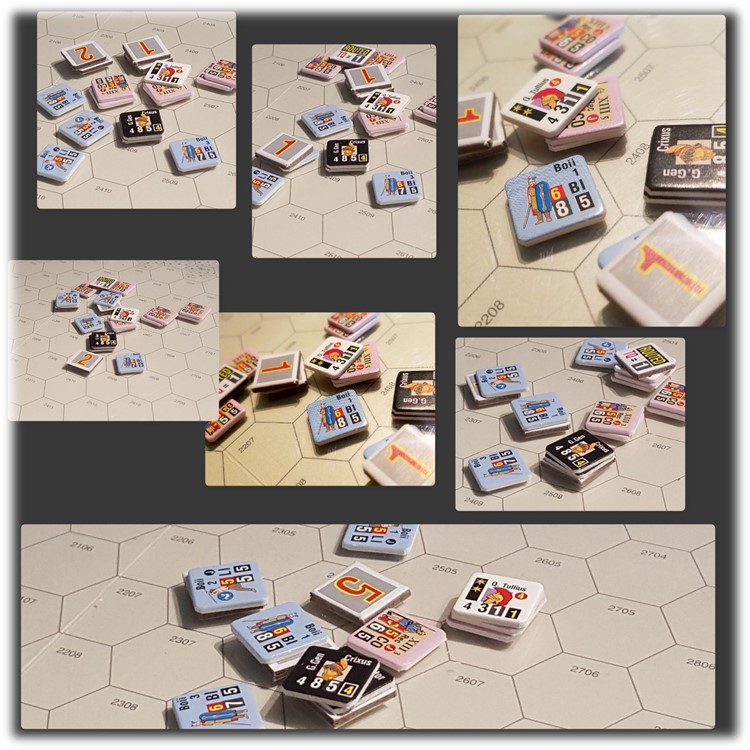
This series of attacks, followed by failed morale rolls and a continuation roll with more combat, breaks the Roman force into bits and they rout. Crixus proves an able leader against the Roman general.

Destroyed!
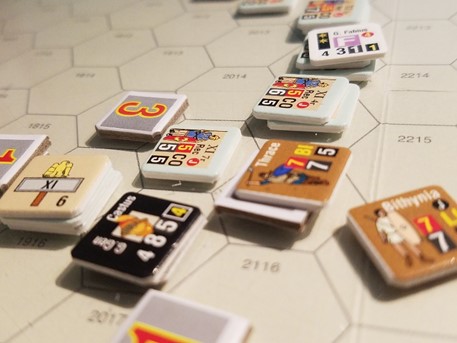
Craterus and his central force move to close with the final Legion force in the center.

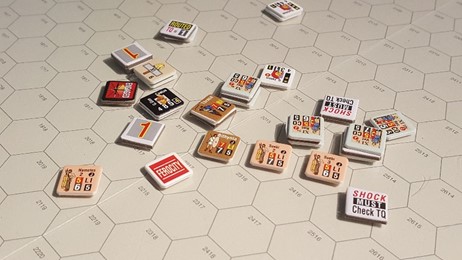
This becomes a somewhat swirling affair and sees both sides taking losses.
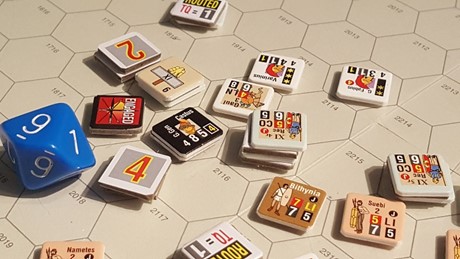
Castus flails against the XI Legion, who use their depth to absorb losses.
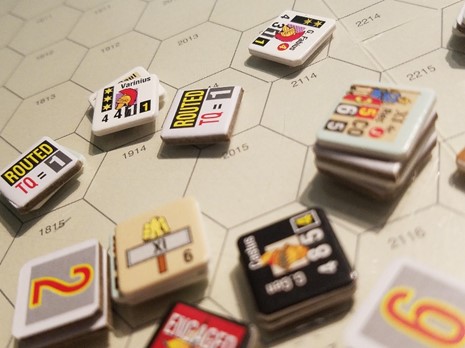
Even with Varinus launching a cavalry attack on the rebel slaves they are left battered and flee the field.
Spartacus and his Gaulish cavalry attack Varinus, and we can imagine the fierce hand to hand fight that ensues! Varinus rides away to seek solace with a cohort, while Spartacus regroups his horsemen for another attack.


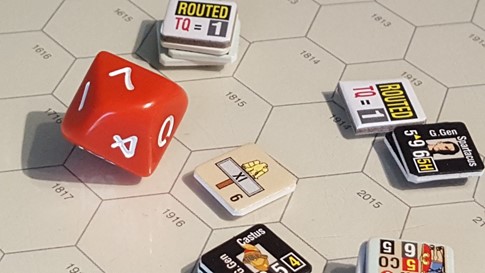
The Standard of the Roman XI th is captured! This all but seals the battle as the standard is worth significant rout points.
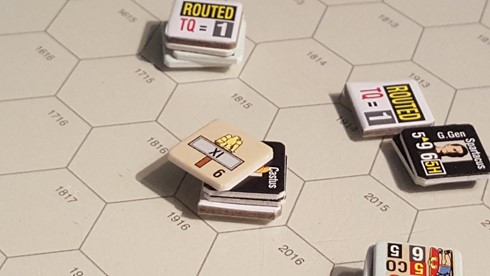
Now the battle becomes a slaughter.

The Slaves re group, and look to push on after the routing Romans on both flanks.


Despite some losses in the center the Slaves hold on to force a final bloody fight in the center. It is at this time that the Roman side declares UNCLE!
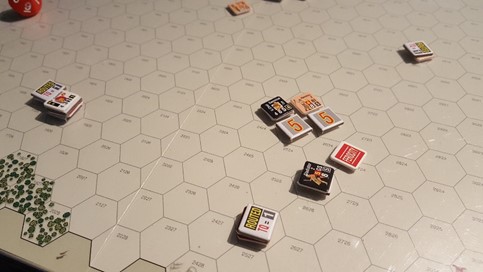
Despite this early victory the end was assured, was it not?
In the final battle of the 3rd Servile war – Spartacus sought battle with Crassus one on one, and paid the ultimate price.
“The battle was long and bloody, as might have been expected with so many thousands of desperate men. Spartacus was wounded in the thigh with a spear and sank upon his knee, holding his shield in front of him and contending in this way against his assailants until he and the great mass of those with him were surrounded and slain. The remainder of his army was thrown into confusion and butchered in crowds. So great was the slaughter that that it was impossible to count the dead Spartacans. The Roman loss was about one thousand. The body of Spartacus was not found.”
The 6,000 surviving rebels that Crassus had taken prisoner were crucified and spaced out along the Appian Way, from Capua to Rome. Here they were left to rot as a reminder to all potential future rebellions.
“A large number of his men fled from the battlefield to the mountains, but Crassus followed them. Split into four separate groups, the slaves continued to fight until they all perished except six thousand, who were captured and crucified along the whole road from Capua to Rome.”
Love the narrative and history lesson. I should have known the history.